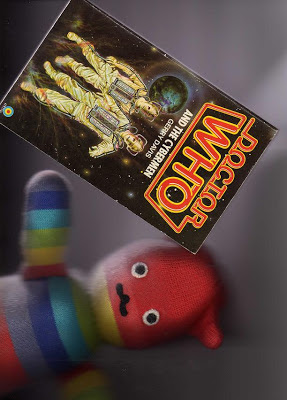By Duncan. Big Gay Longcat is much too young to remember
Rentaghost, so I'll have to take this one.
Rentaghost finished in 1984, which means that - unless there was a repeat in the late-80s or early-90s - I would have been 5 years old (as old as Big Gay Longcat is now) when it finished. My memories are as vague as you would therefore expect - the theme tune, of course (though hardly any of the lyrics), and every episode ending with somebody going into the cupboard where the dragon lived and coming out in comedy soot-blackened make-up. Something about a pantomime horse as well. Timothy Claypole and Hazel McWitch were the only characters I could recall well enough to name without resorting to Wikipedia.
That was until yesterday when, prompted by
the Anorak's thread on the series, I watched the first four episodes of the 1st season - dating from 1976 so before I was even born.
The thing that most impressed me about Rentaghost was (aside from the theme song itself, which is remarkably catchy and I was humming it to myself all today) the way the "action" (for want of a better term, as I hesitate to go as far as to say "plot" or "story") continues through the end credits, with the "You Have Been Watching" style shots of the actors being credited coming not from stills or stock, credits-specific footage, but instead showing the aftermath of the situation the episode proper left off. And then over the crew credits we get a sort of epilogue, a dialogue-free bonus scene or two. I'm amazed this playing with the conventions of the medium doesn't happen more often in other, more sophisticated TV shows. (It's Pythonesque, in that
Monty Python's Flying Circus did use this technique from time to time.)
The first episode takes a little while to get going, understandably so because it has to introduce characters and set out some ground rules of how the ghostly powers and "psychic energy" work. The scenes at the train station and on the train didn't work for me, but this was more than made up for by the payoff at the end, where Fred Mumford is being teleported between his parents' house and the Rentaghost office, appearing in an unfortunate position each time and culminating in Mr Meaker having his face painted green and with his head stuck in a birdcage. That gave me the biggest laugh of the episode, followed by Timothy Claypole's brief impersonation of a budgie. I think between them these two moments convinced me to watch more.
The second episode was probably the weakest I watched, concerning a ghostly Highwayman haunting an airport and lots of verbal misunderstandings by Davenport and Claypole. Not that memorable overall, but hardly bad for what it is.
The third episode saw the team at a hospital, a very TV-land hospital of the sort I have never seen in real life, and as I spent a lot of time in hospitals in the late-80s and early-90s I have to wonder if the 'quick-Matron's-coming' hospital is entirely an invention of
Carry On films and TV sitcoms, or was there a cultural shift in 1980s Britain that did away with Matron the feared and all-powerful? Anyway, it's a pretty good episode with Timothy Claypole going a bit crazed with magical power and demonstrating that he really does have a scary laugh like at the end of the theme song, and I liked the payoff of Fred Mumford being stuck in a filing cabinet just as his parents turn up and ask where he is.
The fourth episode was probably the best of the four, starting with an amusing scene of Claypole turning Mr Meaker's baby son into a puppy and back again before Meaker, but not the man he was expressing his parental pride to, becomes aware that the change happened. Most of the episode sees the team being store detectives, watching out for shoplifters while Claypole mischievously makes the biggest things in the room (a rowing boat and then a tent) disappear. The Rentaghost format here shows its flexibility, as we can see the team doing pretty much anything from episode to episode. It's not a unique format for Kid's TV comedy, I can think of
The Goodies and the Chuckle Brothers at least who have done similarly. In the end Claypole makes almost everything in the shop vanish, which presumably gets them the sack to do something different next time. Why this doesn't get Claypole the sack from Rentaghost is a mystery, but perhaps with his poltergeist power it's better to have him at least sometimes on their side. I am definitely over-thinking this.
So the writer of Rentaghost was Bob Block, who also wrote
Galloping Galaxies! This was a considerably shorter-lived and much more obscure series from 1985 that is probably only memorable for having Kenneth Williams in it as the voice of the computer Sid, but I have stronger childhood memories of it than Rentaghost because of the novelisation that I used to borrow from the local library, along with Target novelisations, before graduating on to the grownup's SF section and the novels of Douglas Adams, Michael Moorcock, Frank Herbert, Ian Watson, etc.
That's why I think Bob Block,
Rentaghost and
Galloping Galaxies! deserve more recognition.





























